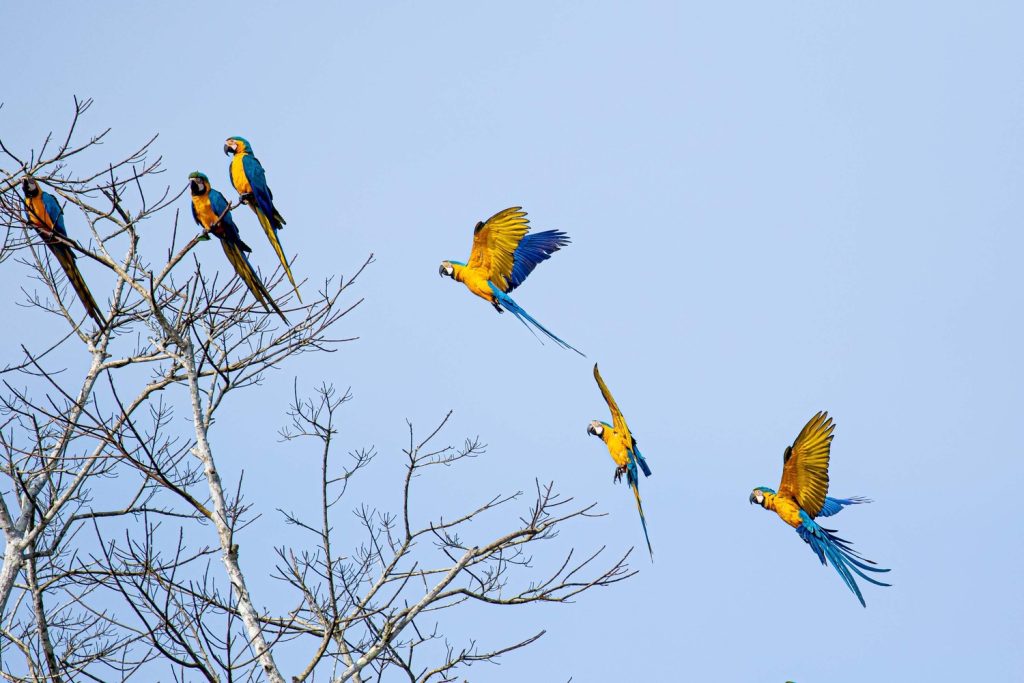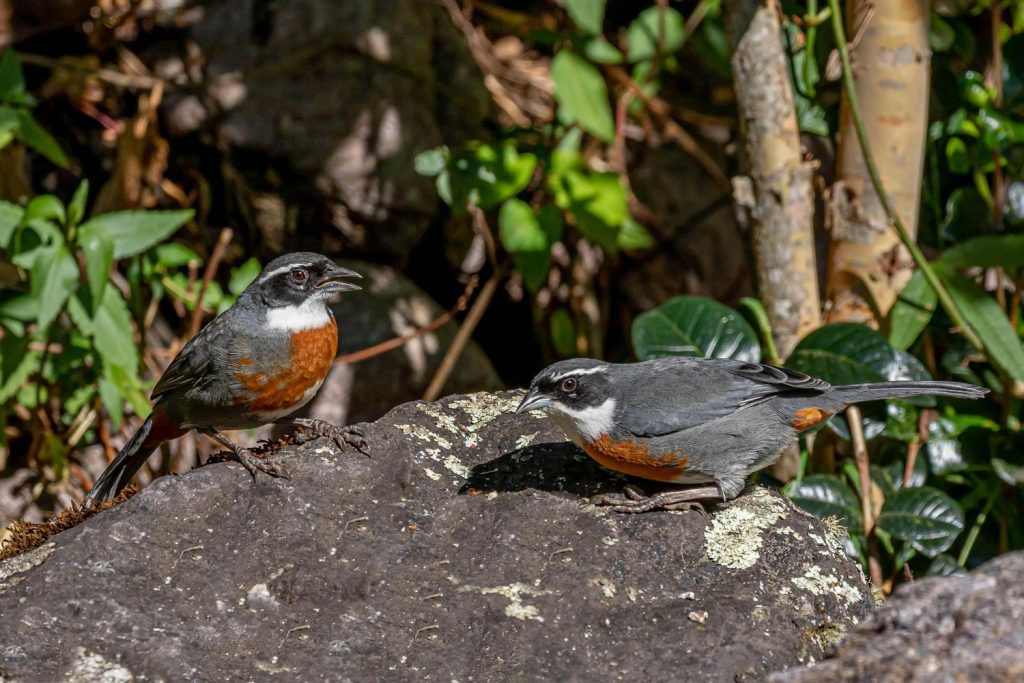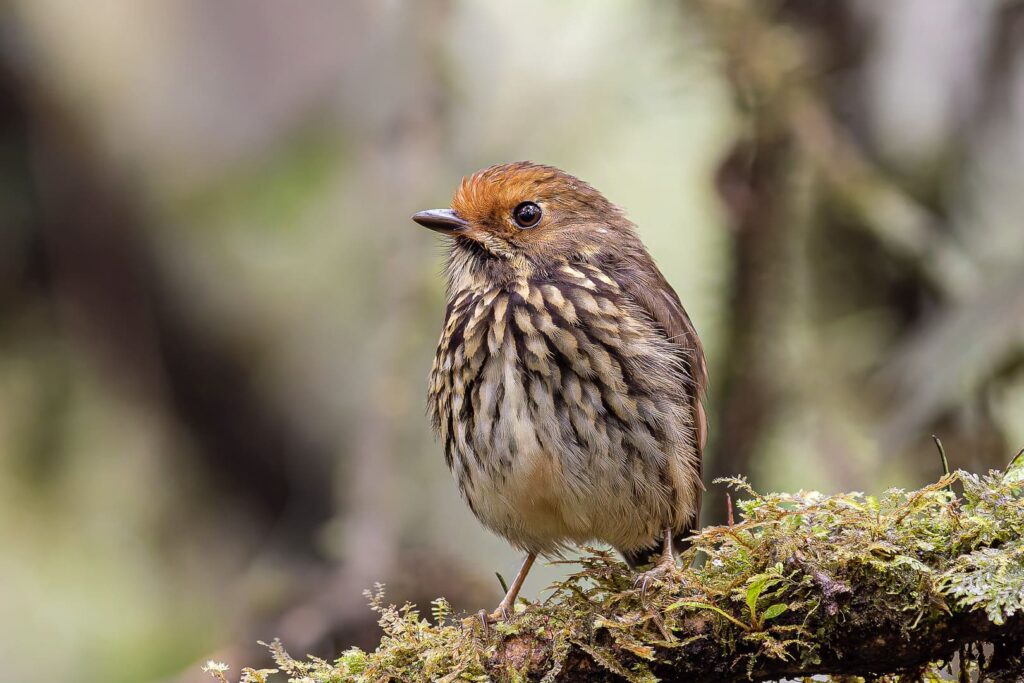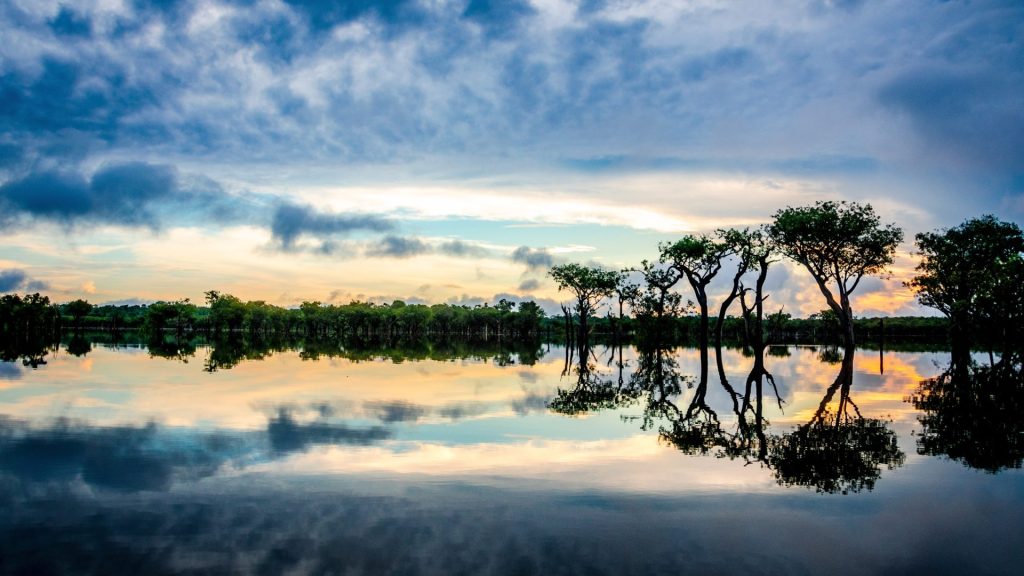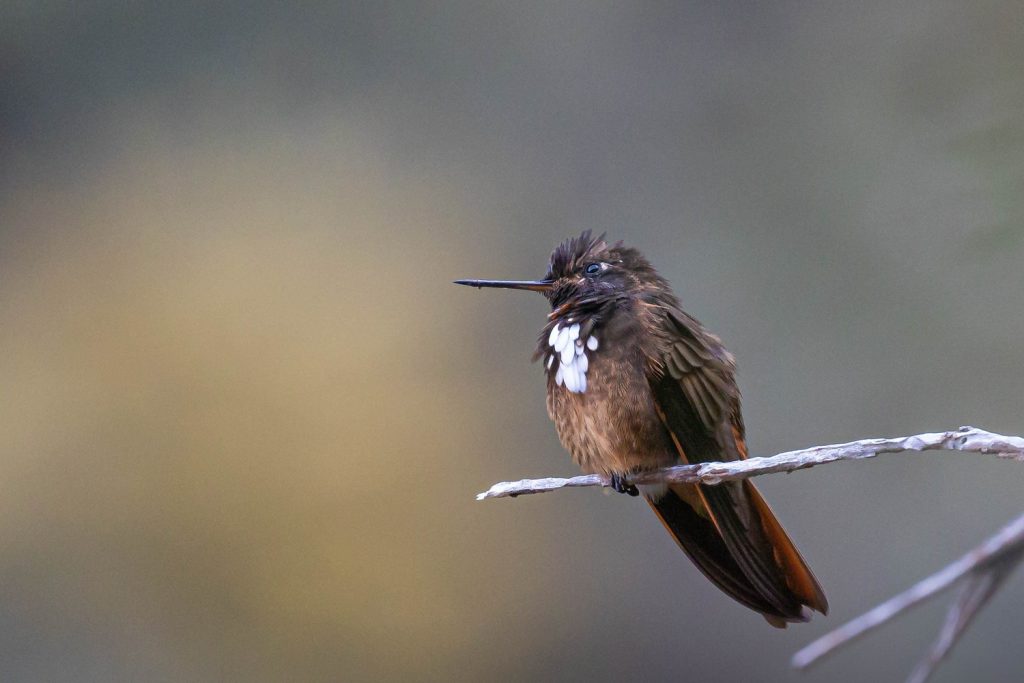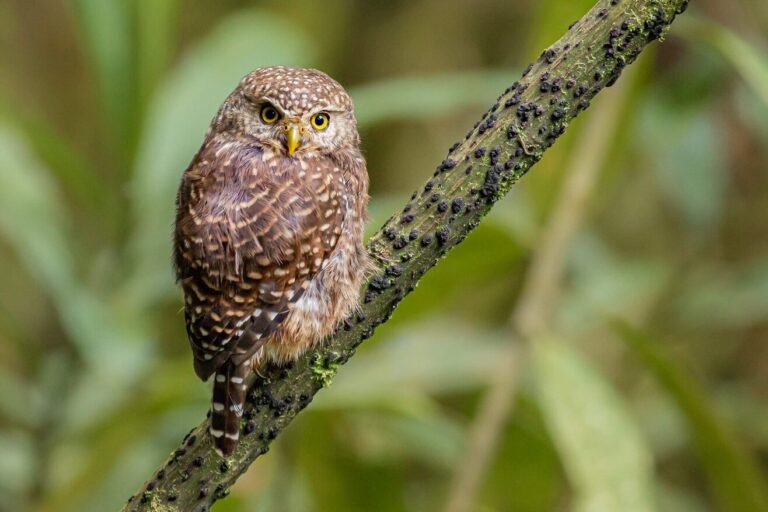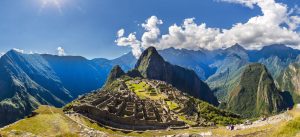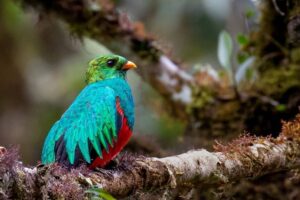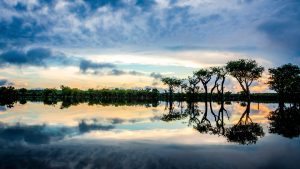SHORT BIRDING IN MANU ROAD – Cloud forest
- From
- USD 899
- Trip Type
- Activities
- Trip Duration
- Group Size
- Habitats Covered
The price listed above is based on a minimum of 4 people in double occupancy. If you have any questions please refer to FAQ of send us a message.
- Trip Outline
- Itinerary
- Trip Includes
- Gallery
- FAQ
Trip Outline
Manu National Park is Nestled within the heart of this captivating country lies an ecological gem that is nothing short of a living testament to the sheer grandeur of nature. , a sanctuary of unparalleled biodiversity, is an unspoiled realm where rainforests, high-altitude puna grasslands, and mist-enshrouded cloud forests converge in perfect harmony. Perched on the fringes of the Andes Mountains Manu Road stands as an embodiment of the wild, the pristine, and the mystical. This untouched paradise unfurls its verdant embrace, inviting you to embark on a journey into the heart of an ecosystem that defies superlatives with a diverse tapestry of life unfolds, including countless species of flora and fauna that have yet to be discovered and cataloged by science.
Our journey through this mystical realm will invite you to embrace not just the wild, but also the ancient. As you traverse this timeless landscape, you’ll have the privilege to enjoy birding while learning about their natural history, and share in their deep-seated knowledge of the land.
So, step away from the well-trodden path and dive into the heart of a land where the exotic and the unexplored await. Manu Road and its cloud forests and Foothills represent an unparalleled journey into nature’s untouched splendor, an encounter with the extraordinary, and a voyage into the depths of Peru’s untamed spirit. Join us as we unveil this ecological gem, where the realms of the cloud forest and the national park merge to form a tapestry of beauty, biodiversity, and enchantment that will forever linger in your heart and mind.
This is intended to be a very short version for Manu National Park, if you are interested in visiting a wider range of it, see here our trip «From Andes to Amazonia» which extends this tour into the foothills. On the other hand, if you are willing to explore the National Park incluiding it´s lowland rainforest, Reserved Zone, Owbox lakes, Manu river, Canopy Tower and Macaw Claylicks, then Birding Manu National Park is for you.
Itinerary
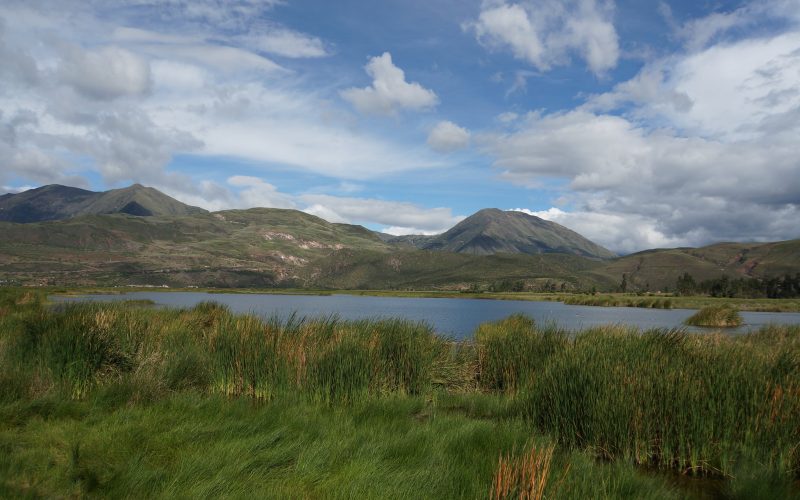
Cuzco - Wayquecha lodge.
The journey starts early in the morning in Cusco, the capital of the Inca Empire. The road takes us first to Huacarpay, a Ramsar Wetland, which provides habitat for a wide variety of local and migratory species. Some of the specialties include waterfowl such as Yellow-billed Pintail, Puna Teal, Plumbeous Rail, Andean Duck, Andean Tinamou, White-tufted Grebe, and the reeds may show us Many-colored Rush-tyrant and Wren-like Rush-bird. The lake surroundings also hold nicotiana flowers, which attract Black-throated Flowerpiercer, Black-tailed Trainbearer, Giant Hummingbird, and the spectacular and endemic Bearded Mountaineer. Finally, the xerophytic vegetation holds the endemic Rusty-fronted Canastero, Streak-fronted Thornbird, Puna Tinamou, and the very rare Darwin's Nothura, among several others.
At mid-morning, we will get back to the road, driving along puna habitats where Slender-billed Miner, Peruvian Sierra-finch, Andean Flicker, Variable Hawk, etc.
At midday, we will finally get back to the Aqjanaco pass, the entrance to Manu National Park, for a picnic lunch, leaving dry intermountain valleys and starting our way towards more lush vegetation and higher diversity. Aqjanaco presents access to one of the most pristine and delicate habitats, the Elfin forest. The opportunities here are excellent for specialties such as the Endemic Urubamba & Red-and-white Antpittas, Puna Thistletail, Puna & Diademed Tapaculos, Moustached Flowerpiercer, Scribble-tailed Canastero, and the spectacular Gray-breasted Mountain-Tanager. Finally, the mixed flocks here hold colorful Tanagers like Scarlet-bellied & Hooded Mountain-tanagers, Golden-collared & Grass-green Tanager, Pearled Treerunner, Yunga's Pygmy Owl, Grass Wren, and many others.
We will spend our night at the beautiful Wayquecha Lodge
Wayquecha to Cock of the Rock.
Wayquecha is located in the Elfin forest. Chill, humid and enchanting, the place is always on clouds and the views are stunning. Very little is known about this delicate habitat. At 3,000 meters elevation, the place is known, not only for the birds, but several sp. of orchids are found here too. The garden regular visitors are Long-tailed Sylph, Scaled and Tyrian Metaltail, Shinning Sunbeam, Cuzco Starfrontlet (Split from Violet-fronted Starfrontlet). The bird life here includes Andean Potoo, Hooded Tinamou, Stripe-faced Woodquail, Semi-Collared Hawk, Black-and-chestnut Eagle, Sword-Billed Hummingbird Rufous-capped Thornbill, Masked Trogon, Crimson Mantled Woodpecker, Puna thistletail, Marcapata Spinetail, Band-tailed Fruiteater, Swallow-tailed Nightjar, Rufous-backed Treehunter, White-throated Antpitta, Trilling Tapaculo, White-throated and White-banded Tyrannulet, Inca(E) & Ochraceous-breasted Flycatcher, Black-throated Tody-tyrant, Ochre-faced Tody-flycatcher, Golden-headed Quetzal, White-collared Jay, Fulvous Wren, Masked Flowrepiercer, Three-striped Hemispingus, Pale-legged Warbler, Black-faced Brush-Finch, Dusky-green Oropendola, Mountain Cacique, etc. This area is home for Spectacled Bear and Culpeo (Andean fox) as well.
Night in Cock of the Rock.
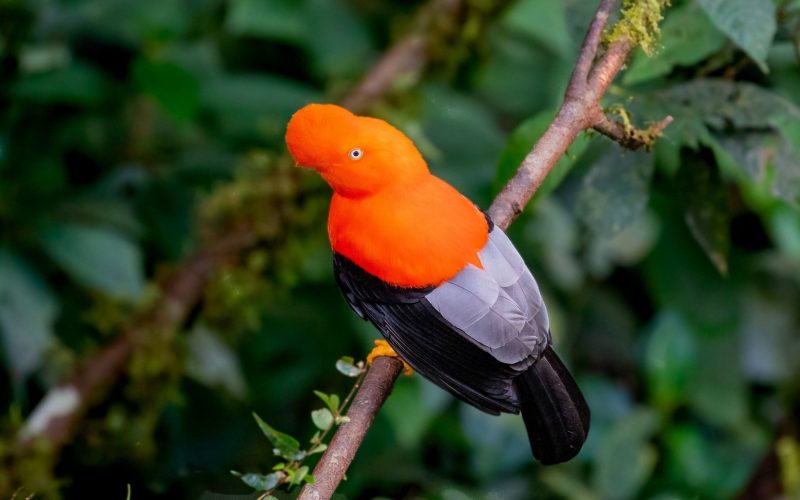
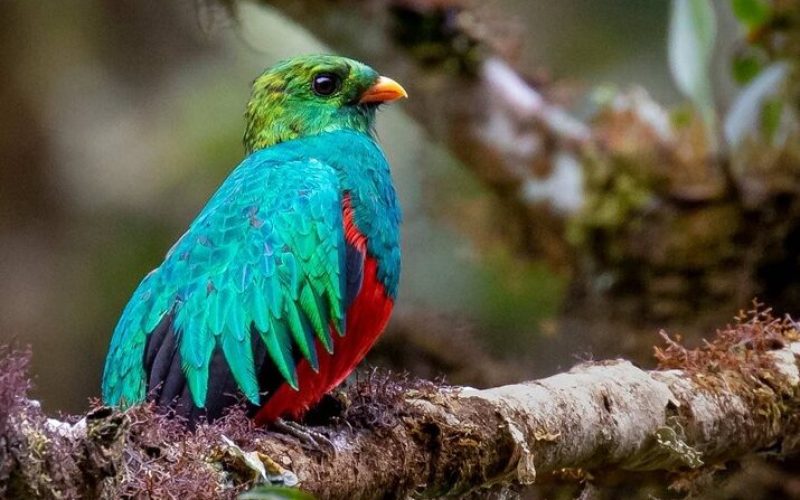
San Pedro
San Pedro is located at 1500 meters elevation, lower, warmer and more confortable than Wayquecha, this is the Cloud Forest itself. This place is particularly special for it´s Cock of the Rock Lek, a wonderful show where groups of bright and colorful males gather here to display attracting dull females. There is a plattaform conveniently placed at the Lek to enjoy it. Other wildlife speciallities here are: Brown Tinamou, Rufous-breasted Woodquail, White Hawk, , Rufescent-Screech-Owl, Military Macaw, Blue-headed Macaw, Great Potoo, Buff-thighed Puffleg, Rufous-boted Raquet-tail, Peruvian Piedtail (E), Violent-fronted Brilliant, Speckled Hummingbird, Blue-banded Toucanet, Highland Motmot, Lanceolated Monklet, Rufous-capped Nunlet, Blue-moustached Barbet, Yellow-billed Nunbird, Chestnut-backed Antshrike, White-backed Fire-eye, Stripe-chested Antwren, Yellow-breasted Warbling-antbird, Blackish Antbird, White crowned Tapaculo, Marroon-belted Chat-tyrant, Black-backed Tody-flycatcher (E), Ornate Flycacher, Fulvous-breasted Flatbill, Cinnamon-faced Tyrannulet, Crested Quetzal, Mottle-backed Elaenia, Scale-crested Pygmy-tyrant, Yellow-rumped antwren, Yellow-breasted Warbling Antbird, Yungas Manakin, Cereulean-capped Manakin, Fiery-capped Manakin, Inca Jay, White-capped Dipper, Andean Solitaire, Olive Finch, Two-banded Warbler, Carmiol´s Tanager, Russet-backed Oropendola. Among a large list of multi-colored Tanagers and others. In addition, a Tanager new for science have been reported and photographed. The restricted Wooly Monkey lives here as well as the Brown Capuchin Monkeys
Night of day 3 at Cock of the Rock Lodge
We end the day 4 in Cusco at mid afternoon - End of services

